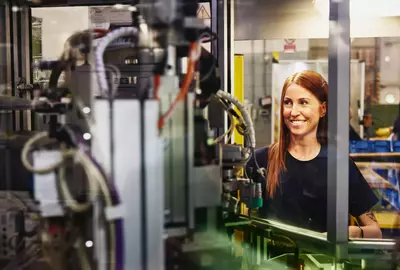As the hybrid work model becomes the new norm, businesses and employees alike are navigating uncharted waters. While this model offers scheduling flexibility and a better work-life balance, it also presents unique challenges that can lead to employee burnout. This article aims to provide businesses seeking top talent, job seekers in various industries, companies needing temporary staff, organizations requiring executive search, employers looking for operational talent, and companies needing HR professionals with effective strategies to mitigate burnout in a hybrid work environment.
Hybrid work burnout is a state of physical, emotional, and mental exhaustion caused by prolonged stress and overwork in a blended remote and in-office work setting. This type of burnout involves job burnout dimensions such as emotional exhaustion and disengagement. Unlike traditional office burnout, hybrid work burnout often stems from blurred boundaries between professional and personal life, increased digital fatigue from constant online meetings, and feelings of isolation or disconnect from colleagues.
To ensure your team remains productive and engaged without succumbing to burnout, consider implementing these five strategies:
1. promote clear boundaries between work and personal life
One of the most significant contributors to hybrid work burnout is the lack of clear boundaries between professional responsibilities and personal time. Encourage your team to establish distinct start and end times for their workday. Here are some actionable steps:
- Set expectations: Clearly communicate working hours to your employee population and encourage them to adhere to these boundaries. This helps maintain a healthy work-life balance and ensures that everyone knows when they are expected to be available.
- Encourage breaks: Promote the importance of taking regular breaks throughout the day. Short, frequent breaks can help prevent fatigue, improve concentration, and boost overall productivity.
- Support time off: Ensure that your team feels comfortable taking time off when needed without guilt or fear of falling behind. Encourage an environment where employees understand that rest is essential for maintaining long-term productivity and well-being.
By fostering an environment where boundaries are respected, you help your team maintain a healthy balance between their professional duties and personal lives.
2. foster open communication channels
Effective communication is crucial in preventing hybrid work burnout. When employees feel heard and understood, they are less likely to experience stress-related issues. Implement these practices:
- Regular check-ins: Schedule one-on-one meetings with team members to discuss their workload, concerns, and overall well-being. These sessions provide an opportunity to offer support, address any issues promptly, and ensure everyone feels valued and heard.
- Transparent policies: Clearly outline company policies regarding remote working expectations. This includes detailing communication protocols, performance metrics, and availability requirements to eliminate any ambiguity and foster a sense of trust.
- Feedback mechanisms: Create channels for anonymous feedback so employees can voice concerns without fear of repercussions. Implementing these mechanisms demonstrates a commitment to continuous improvement and shows that employee input is both welcomed and acted upon.
Open communication ensures that potential issues are addressed promptly before escalating into more significant problems.
3. leverage technology wisely
While technology enables seamless collaboration in a hybrid setup, its overuse can contribute significantly to digital fatigue. To strike a balance:
- Optimize meeting schedules: Limit the number of daily virtual meetings; consider asynchronous communication tools like Slack or Microsoft Teams for non-urgent matters.
- Use collaboration tools: Invest in tools that streamline workflows (e.g., project management software) rather than complicate them.
- Encourage tech-free time: Promote periods during the day when employees can disconnect from screens entirely.
By using technology mindfully, you can enhance productivity while reducing the risk of burnout.
need help finding the right people to drive your business?
trust our expertise and reach. we are your partner for talent.
contact us today4. cultivate a supportive work culture
A supportive workplace culture plays a pivotal role in mitigating hybrid work burnout. This involves recognizing individual contributions while fostering teamwork:
- Recognition programs: Implement programs that celebrate achievements both big and small, ensuring that employees feel valued for their contributions and motivated to continue excelling in their roles.
- Team building activities: Organize virtual or in-person activities that strengthen bonds among colleagues, fostering a sense of community and collaboration within the workplace.
- Mental health resources: Provide access to mental health resources such as counseling services or wellness programs, supporting employees' overall well-being and helping them manage stress effectively.
Creating an inclusive environment where employees feel valued boosts morale and significantly reduces stress levels associated with hybrid working conditions.
5. provide professional development opportunities
Continuous learning opportunities not only enhance skill sets but also keep employees motivated by providing them with new challenges:
- Training programs: Offer a variety of courses that are relevant both professionally, such as leadership training to enhance managerial skills, and personally, like stress management workshops to promote overall well-being.
- Career pathing discussions: Regularly engage in discussions about career goals and growth opportunities within the organization, ensuring employees have a clear understanding of their potential career trajectory and the steps needed to achieve their professional aspirations.
Investing in employee development shows commitment towards their long-term success, thereby reducing feelings of stagnation which often lead towards burnouts.
conclusion
Preventing hybrid work burnout requires proactive measures aimed at creating balanced, supportive, and engaging workplaces. By promoting clear boundaries, fostering open communications, leveraging technology wisely, cultivating supportive cultures, and providing professional development opportunities, organizations can effectively combat potential burnouts, ensuring sustained productivity along with employee satisfaction.
Remember, addressing these challenges head-on will not only benefit individual well-being but also contribute towards overall organizational success.
seeking talent with the right skills for your organization?
Our specialized partners for talent are here to help. Get in touch with us today.
meet a partner for talent





